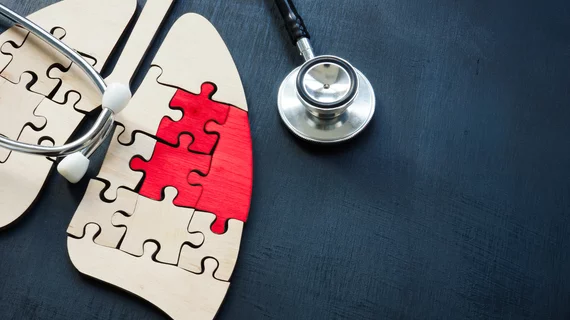More assertive language in cancer screening reports leads to likelier receipt of follow-up care
New data underline the importance of using more assertive language in reporting and other communication methods to ensure that patients receive recommended follow-up care after cancer screening.
ACR developed the Lung CT Screening Reporting and Data System to standardize the delivery of exam findings. Yet, little data exist on how providers report positive LCS results to patients, experts wrote Thursday in JAMA Network Open [1].
Researchers with the University of North Carolina recently set out to close this information gap, analyzing data across five sites in their state, spanning 2015-2020.
“This cohort study found that as the lung cancer suspicion level increased, the communication method shifted from passive to more active modes, consistent with survey data showing clinicians and patients prefer verbal communication modes to discuss suspicious findings,” Louise M. Henderson, PhD, with UNC’s Department of Radiology, and co-authors wrote June 22.
Their final sample spanned 685 patients, including 53% designated with Lung-RADS 3, meaning the finding is “probably benign,” requiring follow-up low-dose CT within six months. Another 28% were designated with Lung-RADS 4A (suspicious, requiring LDCT or PET/CT within three months) and 19% more with Lung-RADS 4B or 4X (very suspicious, recommended follow-up CT with or without contrast, PET/CT, or tissue sampling to occur immediately). Radiologists more commonly communicated Lung-RADS 3 results via letter, voicemail, text, email or through an online portal compared to 4A, 4B or 4X findings. Lung-RADS 3 communications also were likelier to mention benign findings (66%), while 4A and 4B/X more frequently mentioned abnormal or suspicious results (49% and 73%, respectively). However, 4B/X results detailed specific follow-up timing interval less frequently (47%) than Lung-RADS 3 or 4A (96% or 82%).
“Patients with Lung-RADS 4A findings who talked with a clinician by phone were three times more likely to receive recommended follow-up than patients with passive follow-up, highlighting an area of improved care,” the authors noted. “For Lung-RADS 4B or 4X findings, the communication content was less likely to include the specific follow-up timing interval, likely due to the Lung-RADS lexicon using the term immediate.”
Read more about the results, including potential study limitations, at the link below.

